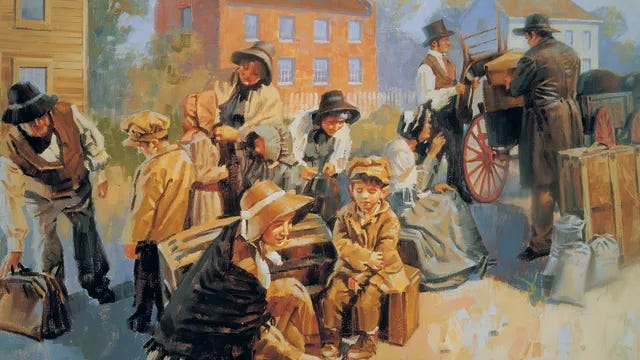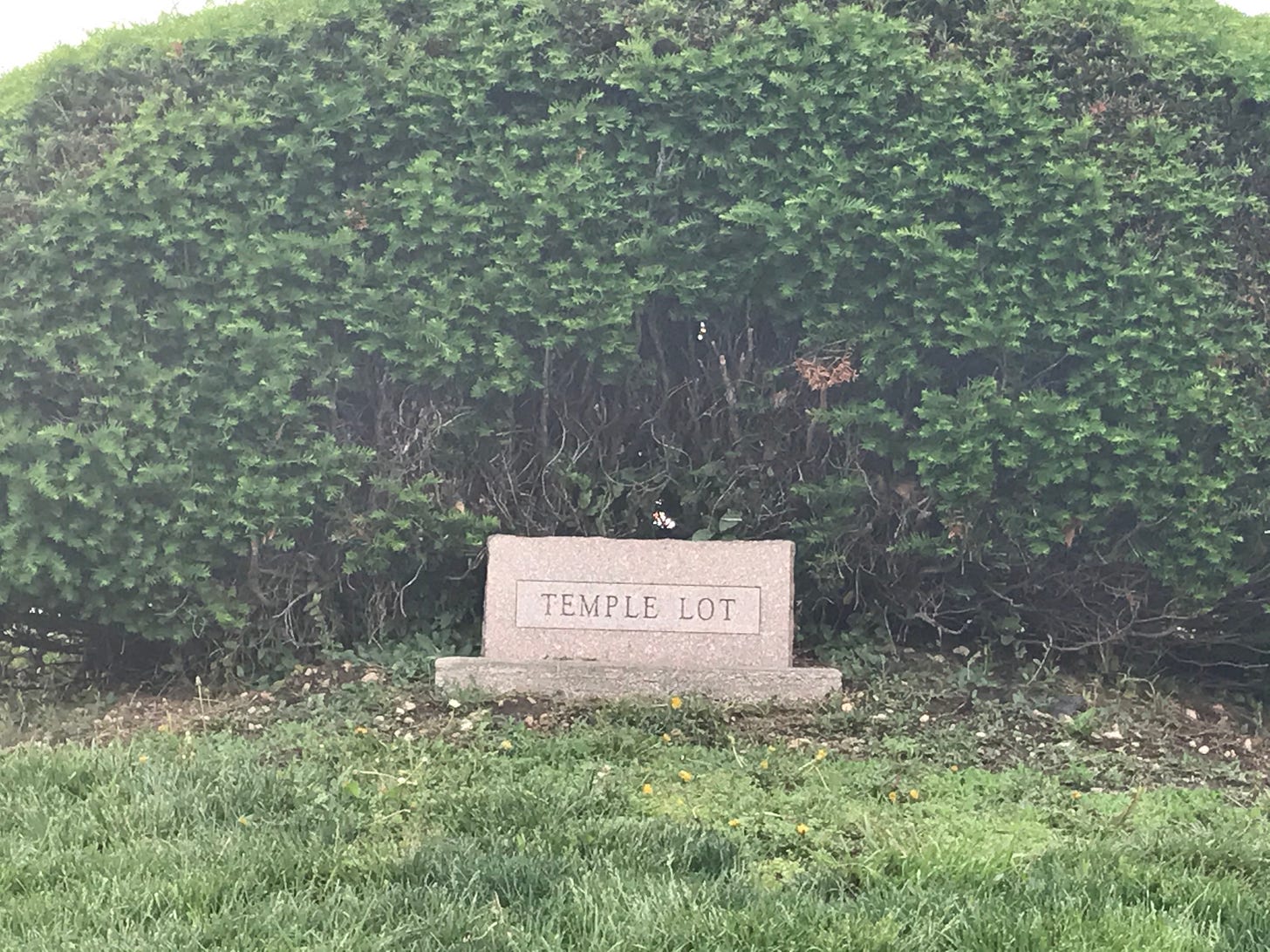The Place Is Not Yet to Be Revealed
Historical Background and Reflections on Doctrine and Covenants 48
The Lord revealed what is now Doctrine and Covenants 48 to the Prophet Joseph Smith in Kirtland, Ohio, on March 10, 1831. As mentioned in McConkie’s section heading, Joseph Smith had inquired of the Lord regarding the procurement of lands for the settlement of the Saints, because of the migration of the Saints from the East in obedience to the Lord’s commandment that they should assemble in Ohio. (see sections 37:1–3; 45:64). In a previous post I recorded some of the historical background for this section, but one small point to add is that around the same time period, Parley P. Pratt reached Kirtland from Missouri and found hundreds of Saints now in the Church. (See Conkling, A Joseph Smith Chronology, p. 22)
In this revelation the Lord directed the Saints in Ohio to share their lands with their brethren and to purchase lands, build a city, and follow the counsel of their presiding officers:
It is necessary that ye should remain for the present time in your places of abode, as it shall be suitable to your circumstances.
And inasmuch as ye have lands, ye shall impart to the eastern brethren;
And inasmuch as ye have not lands, let them buy for the present time in those regions round about, as seemeth them good, for it must needs be necessary that they have places to live for the present time.
It must needs be necessary that ye save all the money that ye can, and that ye obtain all that ye can in righteousness, that in time ye may be enabled to purchase land for an inheritance, even the city.
The place is not yet to be revealed; but after your brethren come from the east there are to be certain men appointed, and to them it shall be given to know the place, or to them it shall be revealed.
And they shall be appointed to purchase the lands, and to make a commencement to lay the foundation of the city; and then shall ye begin to be gathered with your families, every man according to his family, according to his circumstances, and as is appointed to him by the presidency and the bishop of the church, according to the laws and commandments which ye have received, and which ye shall hereafter receive. Even so. Amen. (D&C 48:1-6)
Imagine that… the Lord wanted his people to share with each other. The Lord knew that His Saints needed a place to live, but He also knew that their dwelling places would be temporary. The Lord also helped His Saints to anticipate and plan ahead for the time when they would purchase land for an inheritance. For these early Saints, the city of Zion was within their reach. For this reason, the Lord counseled them to save as much money as possible.
The early Saints were eager to know the time and the place for building the city of Zion. It seems strange to me that after two centuries, our enthusiasm for the city of Zion has waned so much that we almost seem to have forgotten it altogether. The rhetoric of the modern Church is that we are building Zion in our branches, wards, and stakes wherever we live, but the reality of the matter, in my opinion, is that most of us spend our time building up various components of Babylon during the week, only to give lip service to Zion on Sunday. If the early Saints were among us today, I think that they would be shocked that even after two hundred years, the city of Zion is nowhere in sight, and Latter-day Saints seem much more eager to gather on cruise ships, in shopping malls, and in sports arenas then they are to gather in the New Jerusalem. There are, of course, exceptions to this attitude, but in my opinion, they seem to be very few and far between.
The Lord informed His Saints that the place of the New Jerusalem had yet to be revealed, but that He would reveal the place to certain appointed men. These men would then purchase the lands, and begin to lay the foundation of the city.
I wonder, now that we know the place of the New Jerusalem, and now that the foundations of the city have been laid, why does the Church of Jesus Christ of Latter-day Saints spend most of its time mixing and engaging with Babylon? Especially considering the great efforts and sacrifices of the early Saints to lay the foundations of Zion, why do we treat their efforts and sacrifices lightly? Many of us followed Brother Brigham into the desert, which, although it has blossomed as the rose, it has also become the Babylon of the West. This geographical drift may also teach us something about institutional drift.
Once the lands were purchased and the foundations of the city laid, the Lord intended to gather every man with his family into Zion. What happened? I’m sure that we will learn more about what happened as we continue our study of the Doctrine and Covenants.
What do Smith and Sjodahl add to our understanding of these verses?
1. -6. In former Revelations (Secs. 37:3; 38:32; 39:15) our Lord had commanded the Saints in the East to gather in Ohio, where they would be “endowed with power from on high.” The spirit of gathering was poured out upon them, and in the spring of 1831, shortly after the arrival of the Prophet Joseph in Kirtland, many Saints began the westward move from the State of New York. The Saints in Kirtland then began to make inquiries as to how the newcomers could obtain land to settle upon, and where they should make a permanent location. This Revelation was given in answer to their inquiries.
Remain for the present] The Saints in Ohio should not yet move westward. The place of the gathering and of the city had not yet been revealed, but would be, after the arrival of the Saints from the East (v. 5).
Impart to the eastern brethren] They should divide their land with the brethren from the East, and if there was not enough land for all, those who could not buy of the Saints, should buy wherever there was an opportunity (v. 3). They were also instructed to earn all they could, and save the money, so that they would be in a position to buy land for an inheritance wherever God indicated that the City should be built.
-
-
-
Then shall ye begin to gather] Then the time would come for the great gathering of the Saints to the place of the City of Zion.
General Notes
This is a dispensation of gathering. “Gather my Saints together unto me: those that have made covenant with me by sacrifice” (Psalm 50:5) And not only does the spirit of gathering rest upon the Saints. The nations of the world have also become partakers of the same spirit. Zionism among the Jews, pan-Hellenism among the Greeks, pan-Slavism, etc. are illustrations of the operation of the Holy Spirit among the children of men toward the unification of all into a great brotherhood. And it is all due to the establishment of the Church in this age of the world. See General Notes, p. 269 (pp. 280-281)
I mostly agree with Smith and Sjodahl about the spirit of the gathering, although Zionism is a little more complicated. I agree that the Restoration of the Gospel and Church of Jesus Christ signaled and sparked the gathering of Israel, but the great and marvelous work of the Lord still lies ahead of us. In my observation and in my opinion, it seems like the Church of Jesus Christ of Latter-day Saints has been and is still being scattered, perhaps somewhat like the Jews, the House of Israel, and the Lamanites were scattered. If we truly want to be gathered, as a mother hen gathers her chickens, we must hear, hearken to, and heed the voice of the Lord. He is the Good Shepherd, and only through Him can their be one fold and One Shepherd.










